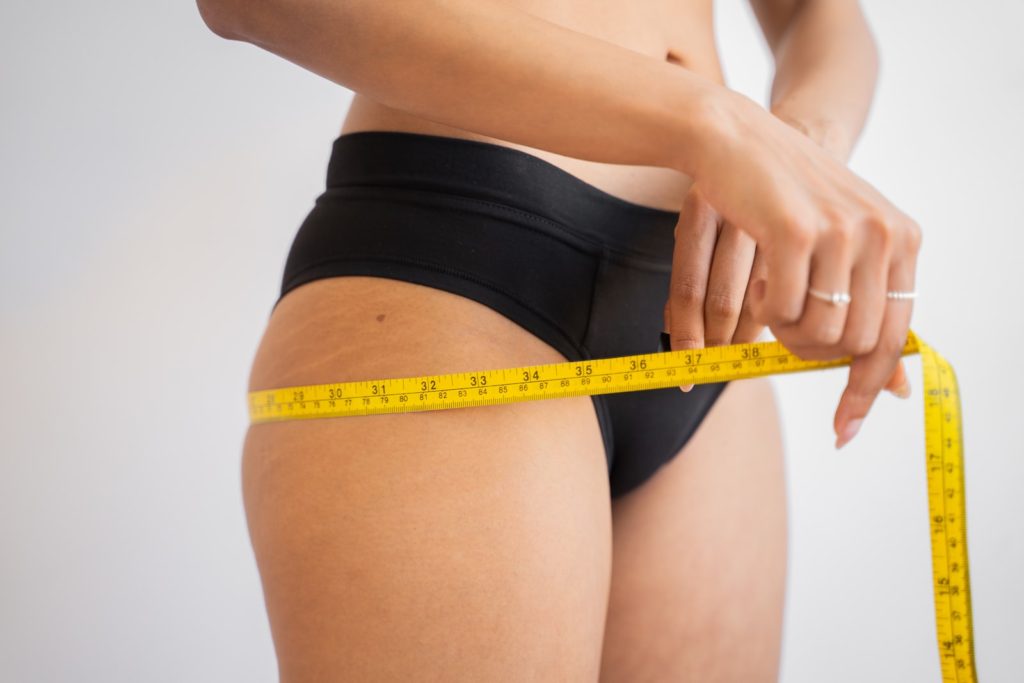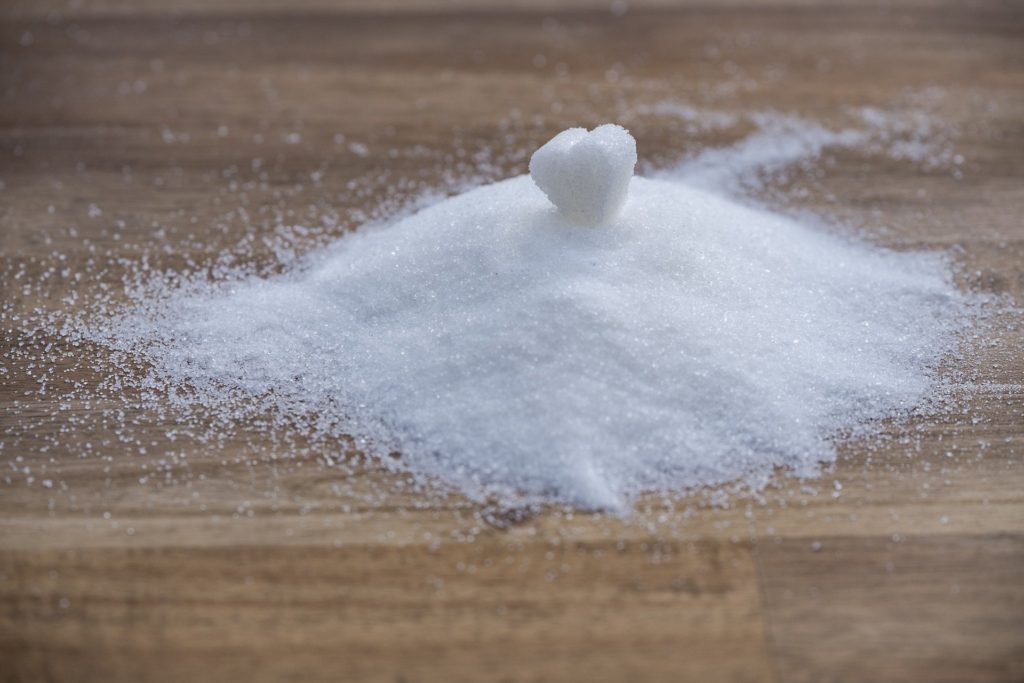You can lose as much weight as you want on keto.
A low-carb high-fat diet has gained a lot of popularity over the years.
Low-carb diets, like keto, deplete glycogen stores and lead to weight loss.
Here is what you need to know about how long it takes to achieve your ideal body weight on keto.
On keto, you consume between 20 and 50 grams of carbs daily and consume more fat to kick you into ketosis.
When glycogen levels drop, your body enters a natural metabolic state known as ketosis, which boosts fat-burning.
Weight loss can be oversimplified. If you want to lose weight successfully and maintain it, you should know more about how keto works.
Weight loss and a lower body mass index on keto, are being verified by numerous studies.
It may take longer to lose a lot of weight than just shedding a few pounds, but in the first week, you can expect to lose around 10 pounds. This is because on the first few weeks of keto, your body will lose a lot of water weight. This is because carbs hold a lot of water, meaning that when you don’t eat carbs, you’ll get rid of the excess water quickly.
How Much Weight Can I Lose on Keto?
A keto diet may help you lose 50 pounds in half a year! If you lose weight at a slow and steady rate of 1 to 2 pounds a week, you can achieve really whatever weight-loss goal you want pretty quickly.
Within 6 months, you can lose 50 pounds of body weight. This is a healthy weight loss rate.
Here is what you can expect in terms of weight loss during the early phases of adhering to the diet.
How Much Weight Can I Lose on Keto In the First Week?
Normally, you’ll shed up to 10 pounds in the initial week of the ketogenic diet. Ketogenic diets greatly reduce your appetite and help you flush out excess water that you retained because of carbs.
When your body has used up its glycogen stores, you urinate more frequently, one of the symptoms of a low-carb high-fat diet.
Muscle glycogen (sugars) stores 1 gram of glycogen (sugar) with 3 grams of water. That’s why when you go on keto and use your glycogen stores, you’ll hold less excess water.
When your body switches to using ketones as an alternative fuel, your fat burning happens much slower compared to how fast your body excretes water.
How Much Weight Can I Lose on Keto In the First Month?
By the first month of keto, you may have lost around 15 to 20 pounds, but only around 5 to 10 pounds of it would be actual fat loss.
By the first month, you should notice the effects of the keto diet on your body. You lost all of your water weight, and now it will be followed by only fat loss.
It’s important to recognize the keto plateau when using ketogenic diets for weight loss, as it is one of the most common problems.
Your body’s adaptation to the diet or other issues such as hidden carbs can cause weight loss plateaus.
If you stop seeing progress at any point on the diet, make sure to add an additional thing on top of keto, like intermittent fasting, OMAD fasting, or prolonged dry fasting.
How Much Weight Can I Lose on Keto In 3 Months?
You can lose as much as 25 pounds in three months by staying in ketosis and not snacking. Individual outcomes may vary, of course. Examine your physical activity, stress levels, and other habits if you’re doing keto and intermittent fasting and you still aren’t losing weight.
Wait… Why Have I Stopped Losing Weight on Keto?
You shouldn’t fret about speeding up weight loss if you are losing weight at a slow and consistent pace, about 1 to 2 pounds per week. However, if you do want to lose weight faster, you can start doing fasting, like intermittent fasting, and keto at the same time.
Watch Out For Hidden Carbs
You may be consuming more total or net carbs than you require to remain in ketosis! However, if you are adhering to the lower end of your daily carb limit, and you still aren’t losing weight, you may need to control your protein portions, as protein raises insulin too.
If you want to maximize your weight loss on keto, follow these 5 tips:
1.) Stop Snacking
Do you snack more often throughout the day? Snacking between meals is a bad way to stave off hunger because it raises insulin.
Researchers examined whether eating six smaller meals a day or two larger meals a day was better for losing weight in patients with Type 2 Diabetes. They found that eating two big meals a day was better, likely because insulin is spiked less often when you don’t snack.
So, if you want to lose weight effectively, stop snacking and instead, eat bigger meals.
2.) Count Your Calories
Although you’re following a low-carb high-fat diet, you still need to keep track of calories. To create a calorie deficit and lose weight, you must either reduce the number of calories in every meal or increase your physical activity.
However, remember that the easiest and most effective way to lose weight is not to exercise, but to eat less often.
Even if you are trying to lose weight, your calorie consumption will still be an important factor for whatever fitness goal you have.
A keto macro calculator can help you determine how many calories you need to eat per day to lose fat or gain muscle.
Remember not to consume more calories than you burn.
3.) Exercise Daily
Even though a low-carbohydrate diet promotes weight loss, exercise plays an important role in maintaining overall fitness and weight-loss after dieting. Exercise, combined with diet, reduces the risk of obesity-related diseases in high-risk individuals.
Try to add more physical activity to your day whether at home or at work. Make sure to schedule a workout at least three days a week.
Tip: Stand up and move around more by setting an alarm to remind yourself.
4.) Try Going to Sleep Earlier
Excessively elevated cortisol levels caused by sleep deprivation are linked to fat storage and muscle loss. People who are excessively exposed to cortisol may experience anxiety, depression, heart disease, memory and concentration problems, and other issues.
That’s why, if you aren’t losing weight on keto, try going to sleep a little earlier so you can recover better.
Many people recommend getting around 10 hours of sleep per day, especially if you exercise or have a physically demanding job.
5.) Track Your Macronutrients
It is critical to regularly assess your macronutrient ratios on keto, particularly if you aren’t losing 1 to 2 pounds per week.
Large bodies require more energy to perform activities. If you aren’t losing weight and have tried the tips on this list, try re-calculating your macros and then tracking and following those macros for a week.
If you lose weight with the new macro ratio that you calculated on the internet, then you must follow the new macro ratio to continue losing weight. If you’re eating too many carbs or protein, your insulin may be raised too much, so you might be kicked out of keto.
8 Common Keto Mistakes Stopping You From Losing Weight
Here are eight common mistakes to avoid if you are trying to stay on keto. You can still make corrections if you’ve missed your goal, so don’t worry too much if you have made some of these mistakes.
1.) Start Fasting
If you want to lose weight faster on keto, consider fasting. Combining intermittent fasting, OMAD fasting, or prolonged dry fasting with keto is a great way to lose weight and lower your insulin very fast on keto.
There are three major types of fasting that I consider:
- Intermittent Fasting — Intermittent fasting is a type of fasting where you eat for a certain period of the day, and stop eating after a certain period. The most common intermittent fasting approach is 16:8 where you eat for an eight-hour period, and fast for the remaining sixteen hours. However, you can still have water, unsweetened tea, or coffee during the fasting period. This type of fasting, like the other ones, will help lower your insulin and help you lose weight, all without overly restricting yourself. This is the method I used after my second week of keto to help me to lose weight faster.
- OMAD Fasting — OMAD (one meal a day) fasting, is a type of fasting, that the name implies, where you only eat one meal a day. It has the same benefits as normal intermittent fasting, but it’s just amplified. I started doing OMAD after my 3rd month of keto, after losing about 20 pounds, after my weight loss stalled. If you want to learn more about OMAD, here’s an article where I discuss its benefits and how to start.
- Prolonged Dry Fasting — Prolonged dry fasting is not like intermittent fasting or OMAD. Instead of changing your daily eating times, you just don’t eat or drink water for certain days of the week. For example, you may dry fast every Monday and just not eat or drink anything that day. This type of fasting is the fastest way to lose weight. Doing an extended fast without water is around 2x more effective than drinking water during the fast, and it’s similar in difficulty, so I and most of the people I know do prolonged dry fasts instead of wet prolonged fasts. When I couldn’t reach my weight loss goal with keto and OMAD alone, I used dry fasting until I got to my goal weight.
2.) Stop Snacking
Even if the foods you are snacking on are healthy and low-carb, they can still raise your insulin a lot, messing up the whole point of a keto diet.
They also increase your daily calorie intake a lot, without you really noticing.
Many people habitually snack, but snacking has its cons on weight loss and insulin.
Focus on eating a filling, unprocessed keto diet meal instead. Choose nutrient-dense, high-vegetable, protein-rich, high-fat meals that will keep you satiated for hours.
You can’t avoid getting hungry if you eat constantly every day as it messes up your hunger hormone — ghrelin.
3.) Exercise More Often
Your liver releases glucose to keep your muscles working when you exercise. Since you burn through carbs faster and utilize fats as fuel, exercising can put you into ketosis faster.
Long periods of inactivity increase the fat deposit around your internal organs, as well as your risk of Type 2 Diabetes, so make sure to work out multiple times a week.
4.) Quit Alcohol
Drinking too much alcohol has two negative consequences on keto: It prevents ketosis and leads to weight gain. Though quitting alcohol may take time, planning, and help, it will help you lose weight faster, and live an overall more controlled life.
Here are some of the downsides of continuing to drink alcohol:
- Alcohol has a lot of calories (7 calories per gram,) which can make you gain weight very easily.
- Studies have shown that drinking alcohol can artificially increase your hunger signals.
- Alcohol is not keto-approved since it can kick you out of keto very easily, stalling your weight loss progress.
5.) You’re Not In Ketosis
Getting kicked out of ketosis is one of the main reasons why low-carbohydrate diet weight loss stalls. Maintaining your macro ratio ensures that glycogen depletion and ketone production happens. Your macro ratio should be:
- 30–35%+ of calories from protein
- 60%+ of calories from fat
- <10% of calories from carbs
The most effective method to determine whether you are in ketosis is to examine your ketone levels using a urine ketone test strip. The test strip can tell you whether you’re in ketosis or not.
However, if you don’t want to buy a test strip, you can look at my article here talking about all the signs that can help you determine if you’re in ketosis or not.
6.) Eat More Fat and Fewer Carbs and Protein
It’s obvious that eating too many carbs will spike blood sugar, prevent ketosis, and cause weight gain. To maximize your body’s fat-burning potential, keep track of your net carbs rather than your total carbs. Furthermore, stay on the lower end of your carb limit for the day.
Is there a downside to having too much protein?
Moderate protein intake is imperative. Keep your daily calories between 30% and 35% to maintain lean body mass and function.
However, eating too much protein causes excess gluconeogenesis, a non-carb source of glucose (sugar) production, which can kick you out of ketosis since it spikes insulin.
Around 50% or more of the protein you eat gets converted into sugar through gluconeogenesis.
7.) Manage Your Stress
Any diet, including keto, can be seriously affected by chronic stress, lowering your metabolism and increasing abdominal fat. Also, your food choices resulting from stress can lead to weight changes, so it’s important to manage your stress on keto.
An observational study has demonstrated that an 8-week stress management course reduced BMI, perceived stress, depression level, physical activity, and dietary habits in participants.
There are many free courses like this online. For example, Coursera’s “The Science of Well-Being” course is a great, free course from Yale University.
When I took the course, it definitely changed my perspective on stressful situations as the course instructor teaches you how to stay calm and not worry about small issues in your life.
If you’re interested in improving your overall happiness, I highly recommend The Science of Well-Being course.
8.) Watch Your Medications
Some people don’t lose weight, even when following a very low-carbohydrate ketogenic diet in the best possible way, because of an underlying health condition and the medications that they take to deal with those conditions.
Medical conditions such as hypothyroidism, Cushing’s syndrome, and polycystic ovary syndrome (PCOS) are mentioned by the UK’s National Health Service as causes of obesity. Medications such as insulin and steroids, which are used to treat these conditions, increase hunger and result in weight gain.
Conclusion
Many studies have shown the keto diet to be an effective tool for weight loss. Weight loss varies from person to person, but a stable and healthy rate to aim for would be 1 to 2 pounds per week.
There are several reasons for weight loss stalls, including a lack of physical activity, stress, and constant snacking. Using the strategies provided above, you can achieve long-term, sustained weight loss.
If you’re interested in starting the keto diet, here’s my guide on the benefits of keto and how to start.
- How to Make a Layer Cake at Home - June 1, 2023
- Can You Still Lose Weight If You Aren’t in Ketosis? - February 8, 2023
- Can the Keto Diet Help With Depression? - February 8, 2023




